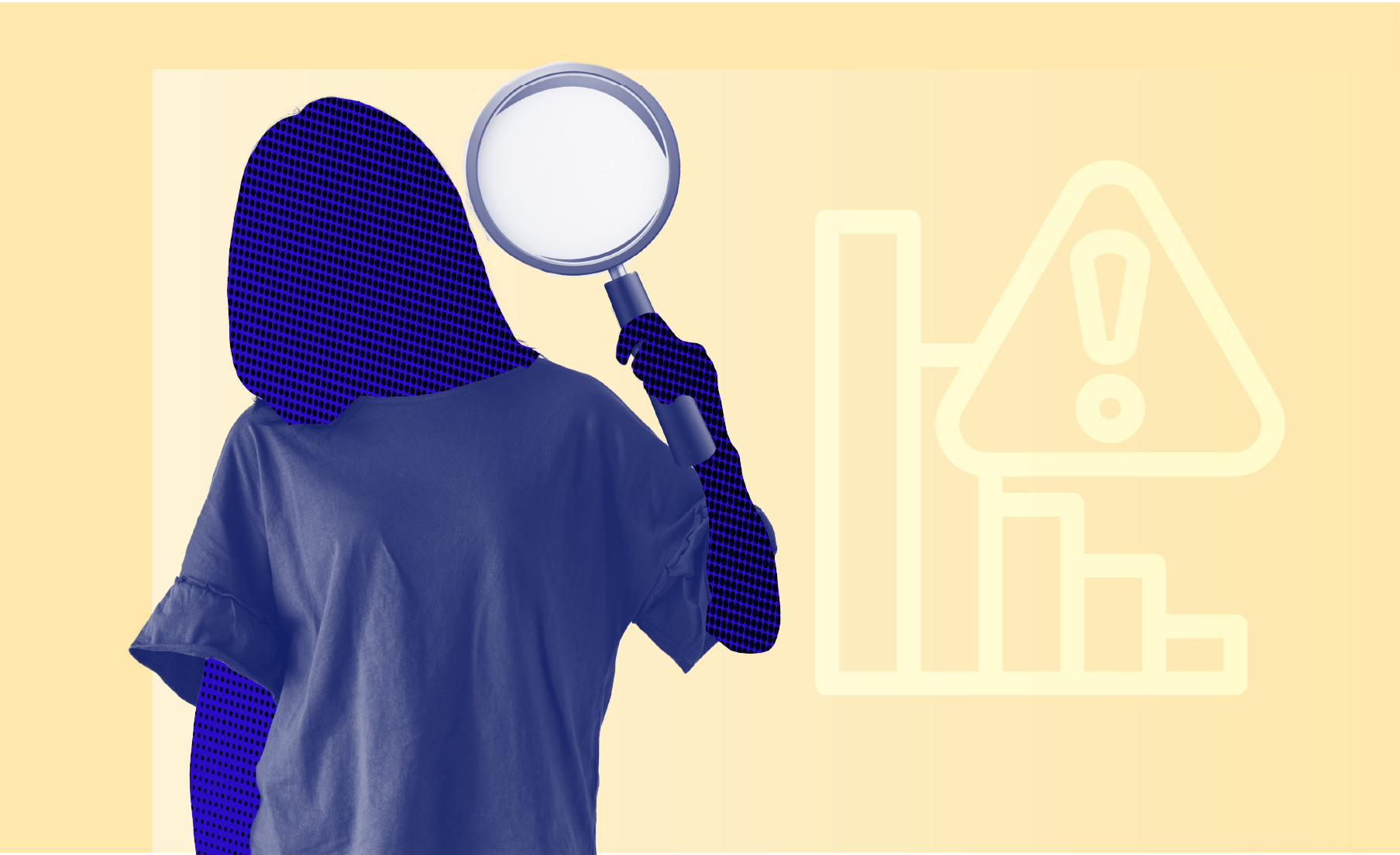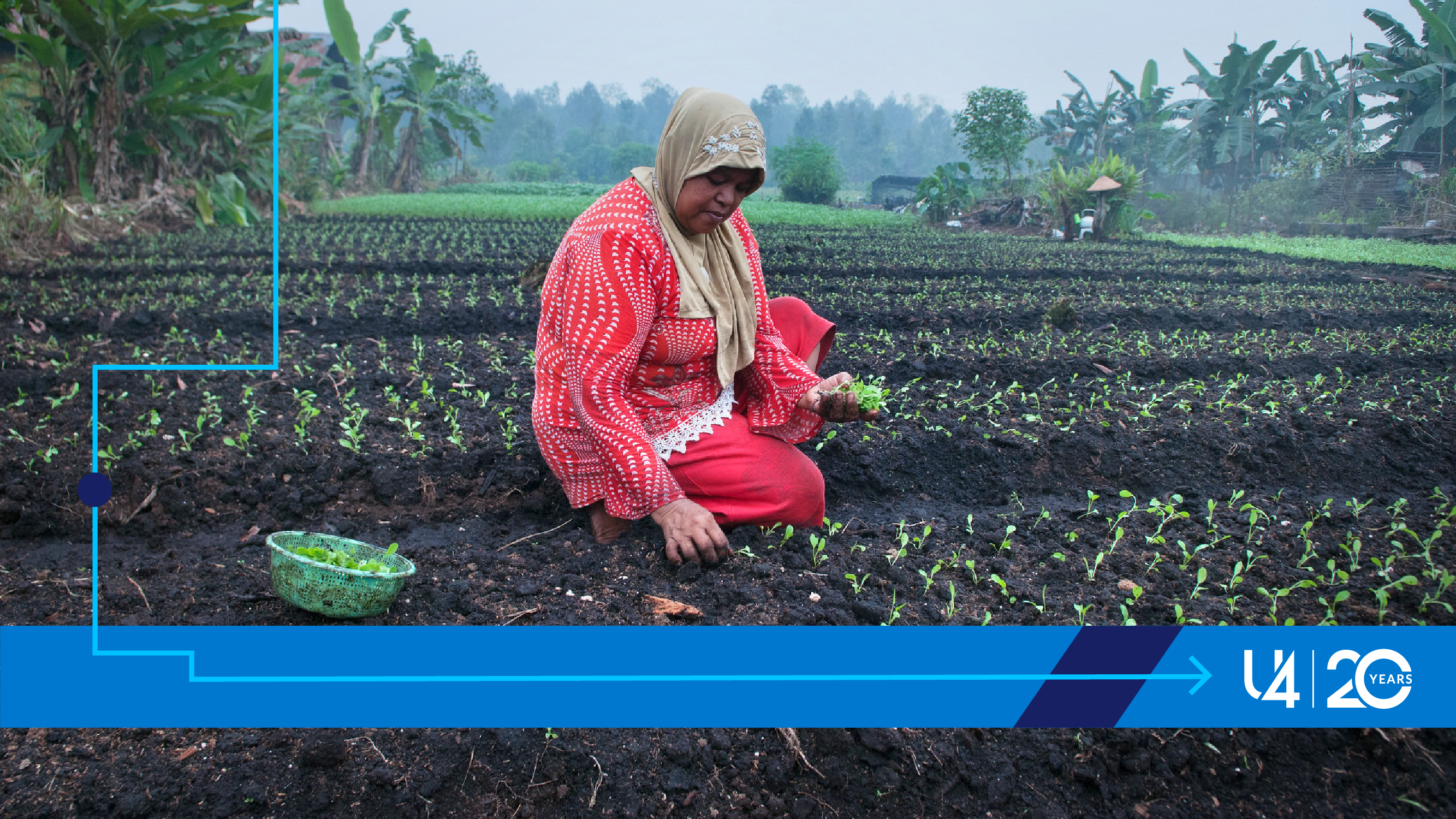Blog
Four ways to embed anti-corruption in Ukraine’s Donor Coordination Platform

In this blog, Majda Skrijelj is offering her personal insight and professional expertise. The opinions expressed here do not represent the views of her employer.
Main points
- The multi-agency Donor Coordination Platform (DCP) can be used as the primary multilateral tool for coordinating support to address Ukraine’s immediate financing needs and future recovery efforts.
- Aid flows coordinated by the DCP are subject to high corruption risks, from a combination of factors including large aid volumes, urgency, and the implications of martial law, as well as weaknesses in reporting channels.
- The DCP has the potential to enhance corruption risk management, thanks to the promotion of four principles: scaled approaches to risk management, third party monitoring, safe and inclusive whistleblowing channels, and information sharing and harmonisation.
The DCP is helping to coordinate risk management approaches
In January 2023, G7 leaders established a mechanism to structure and coordinate aid flows for Ukraine’s reconstruction: the Multi-Agency Donor Coordination Platform for Ukraine (DCP). These flows, emanating from the largest donors to Ukraine, include various types of aid, such as grants, loans, training, and development projects. The DCP has quickly become the principal multilateral platform for planning and coordinating aid for Ukraine’s recovery.
The DCP is structured around three entities: a steering committee, an operational coordination group, and a secretariat. The steering committee, co-chaired by senior officials from the European Commission, Ukraine, and the United States, includes representatives from G7 countries, international financial institutions (IFIs), and the Organisation for Economic Co-operation and Development (OECD). The operational coordination group exchanges information within sector working groups about planned and ongoing projects. And the secretariat, hosted jointly by the European Commission in Brussels (in the Directorate-General for Neighbourhood and Enlargement Negotiations) and the Government of Ukraine in Kyiv (in the Reforms Delivery Office), produces concept papers and facilitates communication between the steering committee and the operational coordination group, and with Ukraine’s national, regional, and local administrations.
While there is a multitude of anti-corruption initiatives ongoing in Ukraine, our focus here is quite specific: we are looking at strategies to improve the risk management of the international partners using the DCP. These international partners already have systems in place to think through and manage risks, but even so, more streamlined and context-sensitive approaches would offer a more rigorous approach. It is vital to get this right, as the stakes are so high – from supporting Ukraine’s military efforts to ensuring reconstruction work is well directed, while also strengthening Ukraine’s own capacities to curb corruption.
Through its mandate of coordination and guidance, the DCP could be an important platform for aligning risk strategies. So what are the most important principles that the DCP should promote to enhance the risk management approaches of its members?
Emerging from our desk-based research and 11 interviews with experts and DCP members at the strategic and operational levels, we suggest four principles. While the first (a scaled approach to risk) would require a significant change in approach for the DCP, the other three (whistleblowing, third-party monitoring, and information sharing and harmonisation) would need to be strengthened.
Four principles for corruption risk management among DCP members
1. Scaled approaches to risk management, not strict zero tolerance
Corruption risks increase when large volumes of aid are directed into risk-prone sectors. Risks can increase further when the urgency of the situation – and a context of martial law – necessitate deviations from standard project preparation procedures.
DCP’s international donors and IFIs all have robust anti-corruption compliance management systems, most of which adopt a zero-tolerance policy for corruption. While admirable in intent, a strict application of this approach comes with difficulties to distribute aid in a country at war. For instance, a report of misconduct can lead to funds being suspended, and this can harm vulnerable people. “Zero tolerance” can also make it harder for implementing partners to raise valid concerns, and it can provide avenues for opponents to block or restrict funding.
A scaled approach to corruption risks would be more appropriate: one that is proportionate and flexible about the degree to which donors should respond to corruption, giving additional support to measures that help manage corruption risks. This involves working with regular partners to identify their corruption challenges and supporting the development of their corruption risk management capacities.
For instance, a joint approach to capacity building for anti-corruption with the main organisations in a specific sector could prevent corruption. As one manager at a development bank put it: “Training of civil servants, and raising awareness about transparency and anti-corruption is crucial.”fc8fb79a79d4 Furthermore, if donors were to set common governance requirements that meet international standards and apply equally to all organisations in a sector, this could elevate anti-corruption standards, develop trust with partners, and ensure that more corruption cases are reported.
2. Invest more in third-party monitoring
Wartime conditions can impact contract management. Confirmation of delivery, checks on real costs, performance verifications, checks on conflicts of interest, and completion validation are challenging during reconstruction. Interviews suggested there are limited systems in place in Ukraine to monitor those post-procurement activities. In addition, the ability to enforce contractual penalties is likely to be low.
These issues may stem from inadequate risk management processes but also workforce challenges, particularly a lack of local anti-corruption expertise. One interviewee, a head of unit in charge for Ukraine at a European Bank, reported that “administrative capacities in Ukraine are satisfactory for regular affairs, but challenging with extraordinary reconstruction needs and large funds inflows.”4367ee822b16
DCP’s members mainly use a fraud-centric approach to corruption, relying on financial reports, audits, and paper checks. For a variety of reasons (complex power dynamics, reluctance to report, lack of evidence, and so on) this may not be the best approach for uncovering certain types of corruption practices in their partners – such as conflicts of interest, nepotism, and favouritism.
Third-party monitoring offers an independent perspective on project management and performance. Evidence suggests that, particularly in situations with limited access, third-party monitoring can enhance compliance. It is especially effective when employed in conjunction with the internal monitoring and verification approaches of project partners.
DCP’s members can support joint third-party monitoring and external oversight. As an example, as Ukrainian civil society is already monitoring procurement documents on Prozzoro, third-party monitoring can also help map incidents along delivery chains, for instance through crowdsourcing platforms, such as the Ushahidi platform. In this way, third-party monitoring can support oversight in procurement and post-procurement activities. It would complement fraud-centric approaches, with a greater emphasis on social accountability and people’s empowerment.
3. Enhancing whistleblowing capacities
Although a new whistleblower reporting portal is in preparation, ensuring the anonymity and confidentiality of whistleblowers remains an issue under the current legal framework. The need for protection is paramount, especially with the ongoing war. Engaging in corruption is perceived as treason, as any corruption scandal could significantly harm the war effort and undermine support.
Our interviewees highlight that there is a need for DCP members and their partners to establish safe, inclusive, gender-sensitive reporting channels, such that anyone can feel free to report misconduct. “There is still room for improvement,” said the World Bank Group’s practice manager Simon Chirwa, “particularly in terms of promoting gender-sensitive whistleblowing mechanisms that could help address gender-related barriers to reporting
IFIs and bilateral donors can require Ukrainian partners – in their framework agreements – to establish inclusive whistleblowing and reporting mechanisms. They can also adjust their own communication channels to be more accessible to vulnerable groups, for instance by adding Ukrainian language to their reporting platforms and making sure that their hotlines are accessible to Ukrainian speakers and are managed by staff trained in inclusive communication.
4. Information sharing and harmonisation
Risk identification and assessment is challenging during wartime, as needs, situations, and stakeholders can change quickly. At the same time, with limited capacities, it can be burdensome for Ukrainian organisations, public or private, to provide information for different donors’ anti-corruption requirements.
The secretariat should support DCP members in harmonising corruption risk management requirements in aid projects (especially for public procurements), and in better structuring information exchange on corruption risks by sectors (political economy analysis, due diligence checks, existing expertise, etc.). For instance, Cost Ukraine (a multi-stakeholders partnership in the infrastructure sector) requested the DCP to incorporate independent review by technical experts to ensure the value and performance of infrastructure investments. This would contribute to a better overview and more efficient corruption prevention and deterrence.
Stepping up corruption risk management within the DCP
Thanks to its coordination potential and the political leverage of its steering committee members, the Donor Coordination Platform offers an opportunity to both streamline and mainstream corruption risk management in aid for Ukraine’s recovery. Whether it takes place through unified reporting systems or risk-based due diligence procedures, this streamlining can make risk management more adaptable to context, and enable cross-agency collaboration and a more strategic allocation of resources.
Similarly, mainstreaming corruption risk management (for example, through tailored anti-corruption training or inclusive whistleblowing channels) contributes to a cultural shift within organisations, fostering an environment of transparency and openness, and encouraging a holistic approach to integrity management.
The DCP secretariat can play a leading role in harmonising corruption risk management requirements in aid projects, placing a much greater emphasis on social accountability and supporting third-party monitoring. This approach would alleviate the negative effects of martial laws on good governance.
The DCP secretariat can support a joint approach to capacity building, aligning assistance with the needs of the main organisations involved in reconstruction. This would help to develop trust with partners and ensure proportionality in corruption responses.
Finally, by structuring information exchange, the DCP can support corruption risk identification, in particular in the planning and appraisal phases of projects.
- Interview with senior manager, Council of Europe Development Bank, 14 September 2023.
- Interview with head of unit in charge for Ukraine, Council European Bank, 14 September 2023.
Disclaimer
All views in this text are the author(s)’, and may differ from the U4 partner agencies’ policies.
This work is licenced under a Creative Commons Attribution-NonCommercial-NoDerivatives 4.0 International licence (CC BY-NC-ND 4.0)


